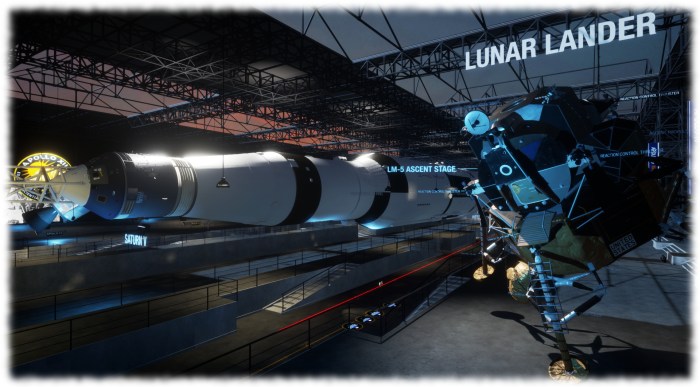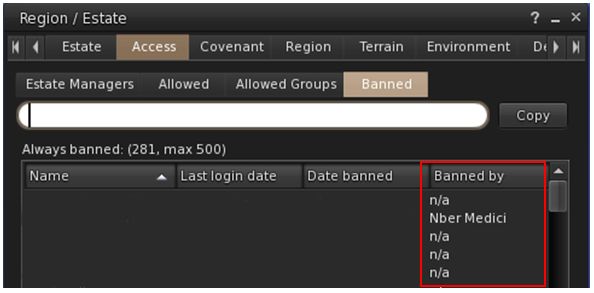
July 16th 2019 marks the 50th anniversary of the launch of Apollo 11 on its historic voyage to the Moon which saw Neil Alden Armstrong and Edwin Eugene “Buzz” Aldrin Jr. set foot on the lunar surface on July 20th, while Michael Collins orbited some 11 km (69 mi) overhead.
I’m re-tracing the flight of Apollo 11 in my Space Sunday articles – part 1, published to coincide with the launch of Apollo 11 is available now, and part 2, covering the Moon landing and the return to Earth will follow on the weekend of the landing. But you can also celebrate the audacious achievement of Apollo 11 in-world in both Second Life and Sansar (and, I’m sure, in other virtual worlds as well – but I am focusing on SL and Sansar here, as it is in these worlds that I spend my time nowadays).
Second Life
Note: there are likely to be more Apollo 11 celebrations than recorded here. These are simply two I’ve enjoyed visiting.
International Spaceflight Museum
Where better to immerse yourself in all things space than the International Spaceflight Museum? Covering two regions, and with the likes of NASA’s (slightly ageing) Jet Propulsion Laboratory region adjoining or close by, the ISM allows you to take a walk through the history of international space-faring achievements, see the massive launch vehicles, re-visit missions both crewed and automated, travel the solar system, and take a glimpse of things to come.
ISM features several elements related to the Project Apollo and its precursor Project Gemini programme; for example, in the shadow of the Rocket Ring sit models of an Apollo Lunar Module (also known as the Lunar Excursion Module or LEM) and the combined Command and Service Modules (the former the capsule in which most of the Apollo crews flew to the Moon and in which all returned to Earth, the latter the power and propulsion system for the Command Module). These include cutaway schematics and other information.

However, located on the ISM’s Spaceport Bravo region, and in the lee of the mighty Saturn V lunch vehicle that carried every crewed Apollo lunar mission on its way to the Moon, is a display dedicated to Apollo 11 (as also seen at the SL16B celebrations in June 2019). It features a combined model of the Command and Service Module and a model of the Command Module itself that allows visitors a peek inside.
Close the this display is a model of the LRV – the Lunar Roving Vehicle, or “Moon buggy”. While this did not fly to the Moon until the Apollo J-class missions (15 through 17), it still stands as a reminder of the technical abilities of the Apollo programme.

And if you want to get a feel for how truly massive the Saturn V rocket really was, then hop up onto the Mobile Launcher behind the Apollo 11 display.
Sitting atop a crawler / transporter the Mobile Launcher comprises the massive slate-grey launch platform base and the massive Launch Umbilical Tower (LUT) that included all of the service arms required to support the rocket (nine in all) with fuel, power, and direct access. The most famous of these arms lay close to the top of the tower as it stood in attendance beside a Saturn V. This arm held the White Room – the room where the astronauts, assisted by pad technicians, boarded their Apollo Command Module. Sadly, the White Room doesn’t form a part of the ISM’s Saturn V Launcher model – but you can climb the stairs all the way up to the swing arm on which it sat, and in doing so gain an appreciation for the size of the rocket next to it.
Headline Apollo Exhibit
Headline Apollo is a pop-up exhibition by Diamond Marchant taking place at the Beckridge Gallery curated by Emerald Marchant in Bellisseria. It takes as its theme a look at Apollo 11 from the perspective of a north Texas newspaper, the Fort Worth Star Telegram. In doing so, it offers a unique perspective on the mission – which was as we know, managed out of the Manned Spacecraft Centre (later renamed the Johnson Space Centre), located further south, near the Texas state capital, Houston.

Given the size of the Bellisseria Homes, they make for a cosy gallery space, but this actually makes Headline Apollo more of an intimate visit. A guide note card is available both at the entrance to the galley and in the foyer (and which includes copies of some of the images seen in the exhibition). The exhibition itself is broadly split in two: to the left of the entrance foyer the launch and the flight to the Moon, to the right, the surface mission and return to Earth.
What makes this exhibition engaging is that Apollo 11 and the Apollo lunar missions as a whole, tend to be remembered in a way that frame them on their own. There might be some ruminations on major events of the time – such as the Vietnam War -, but by-and-large they are presented in something of a bubble. Headline Apollo, however, with its reproductions of front pages and columns from the Fort Worth Star Telegram frames the story of the mission alongside that of daily life in Forth Worth and America as a whole.
For example, sitting alongside the reports of Apollo 11 are those of a more infamous event that took place in 1969, one that would become known as the Chappaquiddick incident, which involved the death of a young woman in a car driven by Edward Kennedy, the youngest brother of John F. Kennedy, who had started America on its journey to the Moon in 1961.

This story, and the more local ones appearing on the reproduced pages of the newspaper put the Apollo 11 mission is something of a different perspective. We’re reminded that for all its faults and weaknesses, humankind can raise itself up, seek to achieve something better, and the bravery of just three men in a tin can can unite us all in a hope for a better tomorrow.
Complete with archival NASA photos an cover pieces from the likes of Time and Life magazines, Headline Apollo offers a departure from the more usual Apollo retrospectives and will be open to visitors through until July 28th, 2019.
Sansar
Sansar may be anathema to some Second Life users, but if you have the hardware to enjoy it – and remember you can with a suitable PC and without the need for a VR headset – then frankly, there is no better way within a publicly accessible virtual world to celebrate Apollo 11 and the entire Apollo lunar endeavour than by visiting the Apollo Museum ant Tranquillity Base.
The Apollo Museum
The Apollo Museum remains one of the highlights of Sansar (if first wrote about it back in 2017). Developed by Sansar Studios, Loot Interactive and NASA, it reproduces the main hall of the Apollo/Saturn V Centre at the Kennedy Space Centre, Florida, to offer visitors a fully interactive guide to the Apollo programme.

Here you can walk the length of a Apollo Saturn V launch vehicle, from the exhaust bells of its five mighty F-1 engines to the tip of the Launch Abort System tower. Along the way, and set out on time-line, you can re-trace the journey of Aldrin, Armstrong and Collins from the launch of Apollo 11 through to its splashdown 8 days later.
This is done by walking up the left side of the Saturn V, where exquisite models (the Earth and Moon not being to scale admittedly) and photos mark the significant stages of the the mission as they unfolded, culminating in Apollo 11’s arrival at the Moon and Armstrong and Aldrin’s descent to the Moon’s surface. The story then resumes on the other side of the Saturn V’s nose, with the two men ascending back to orbit to link-up with Collins in the Command and Service Module, before charting the trio’s return to Earth and splashdown.

With interactive disks available that play audio relevant audio recordings from the mission, it’s a marvellous way to understand the mission, even if I do have a small quibble with the Lunar Module’s legs being shown unfolded during the flight to the Moon (this was actually only the case with Apollo 13, when the LM was being used as a lifeboat).
Beyond this, on the upper sections of the gallery, are sections devoted to all of the Apollo crewed flights, from the tragedy of Apollo 1 through the triumph of Apollo 11 to the near-disaster of Apollo 13, and thence to the the sounding bell of Apollo 17. These also include interactive panels that will play audio when an avatar stands on them, and are bracketed by a complete model of an Apollo Lunar Module (also referred to as the Lunar Excursion Module, or LEM) and a model of the Apollo 13 Command and Service Module showing the damaged and exposed part of the latter after it had been crippled by an explosion within a liquid oxygen tank.

From a large disk under the Saturn V’s Launch Abort System tower, visitors can jump to Tranquillity Base, the landing area for Apollo 11.
Tranquillity Base
Also by Sansar Studios / Loot Interactive and NASA, Tranquillity Base reproduces the Apollo 11 Lunar Module as it sat on the Moon whilst Armstrong and Aldrin were on the lunar surface. This is a more static display when compared to the Apollo Museum, dominated by the Lunar Module and an overhead display which, when correctly aligned, provides insight into the surface equipment placed out on the lunar surface around the LM.
Visiting the individual elements will trigger playback of audio elements relevant to the science packages, whilst closer to the LM Armstrong’s famous statement on setting foot on the Moon’s surface can be heard.

And if you want to know how small the Earth looks from the surface of the Moon, be sure to tilt your camera up and around.
In Conclusion
As noted above, there are doubtless numerous other Apollo 11 celebrations – be they exhibits, parties or something else – across SL and other virtual worlds. But these are the ones I wanted to start here during this historic week. I hope you’ll take the time to drop-in and visits them.
SLurl Details
- Second Life
- International Spaceflight Museum main landing point (Spaceport Alpha, rated General)
- Apollo 11 exhibit (Spaceport Bravo, rated General)
- Headline Apollo Beckridge Gallery (Beckridge, rated Moderate)
- Sansar



